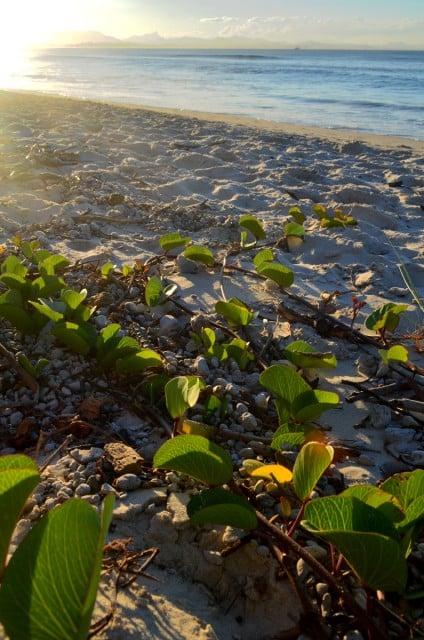Once again, pumice appears on the beach. Each is a piece of lava foam from the eruption of an active underwater volcano. I look up and see Wollumbin/Mt Warning.
Back some 20 million years ago, that rock plugged up what was the largest volcano in the Southern Hemisphere. Why did it stop while others are still erupting? Answering that question reveals intellectual eruptions from Australia that date back to the early part of the 20th century. The fallout changed everything.
In 1915, a colleague presented the work of German researcher Alfred Wegener at a geology conference in the United States. Wegener was an astronomer interested in the origin of the continents. Could they once have been one large land that has since broken up? After all, they looked like they all fit together. Their edges shared similar rock formations. Sometimes they shared fossils of the same plants and animals.
Wegener built on some theories from researchers dating back to 1858. He updated the evidence and renamed the idea ‘continental displacement’. This was the topic presented at the meeting.
Before the conference, Wegener wrote that ‘I don’t think the old concepts have more than ten years to live’. Unfortunately, the leading scientists, mostly from the United States, laughed at what some wit labelled the fantasy of ‘continental drift’. After Wegener’s death in 1930, his work was still considered unrealistic.
But the theory caught the attention of an Australian professor, Edgeworth David (1858-1934). He included the work in his Sydney lectures in 1928. David was experienced with understanding the past. He was among the first to tease out the details and describe not one but a series of global ice ages.
The good professor taught Leo Cotton (1883-1963), who specialised in geophysical studies. Cotton specialised in a mathematical approach to geology. He pondered Wegener’s ideas while he studied rocks showing that the magnetism of the earth changed over time. Over millennia, the poles themselves had moved. When he was a professor himself, he handed these ideas on to his student Sam Carey.
Carey worked in Papua New Guinea, writing a doctoral thesis about its tectonic evolution. Back at the University of Tasmania, he taught what is now called plate tectonics. He linked 3D models of the earth with geologic magnetic data. He explained continental drift and the evolution of underwater rift valleys and new seafloors that spread and expand. Their rocks are younger than those on continents.
Carey traced the pathways of continents by mapping volcanic chains. This is part of the answer about Wollumbin/Mt Warning. It was created as the Australian continent moved over a hot spot of magma. As the continent kept moving north, other places moved over the hot spot. In turn, each place erupted as a volcano. Then, disconnected from its source of lava, it went extinct. The result is the arc of dormant and extinct volcanoes from Queensland to Victoria, with the younger ones in the south.
The other part of the answer is as important. Like Wegener, Carey’s work was controversial. In the 1953, his major paper on the subject was rejected by the American Geophysical Union. From 1956, Carey organised a series of international symposia. His ideas got attention. Yale invited him to spend 1959 in the US to explain his work. Plate tectonics finally caught on.
For rocks, life in the very very slow lane continues as always. The pumice stones here are only newbies, but they are already at work. Across the ocean, they carried small marine hitchhikers. On land, they move up the beach into the coastal vegetation. They become refuges for microbes who start one of the most important jobs on earth: building soil.





Great article that explains why this is such a beautiful and plentiful area. Volcanoes produce fertile soils.
I used to live at the base of Greenhill at Ballarat University in central Victoria, which is a spout of the Buninyong Volcano. From there I moved to the base of the Comboyne plateau near Taree NSW, which is the remains of the Comboyne volcano. And eventually I ended up on Mt Chincogan which is a spout of the Tweed Volcano [Wollumbin/Mt Warning].
I only realised a few years ago that all of these were formed by the same hotspot, starting with a small one in the south and ending up on the biggest shield volcano here.
Here is a good graphic showing the results of the hotspot. http://bit.ly/1O5xzYA